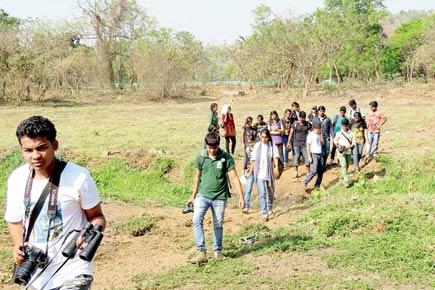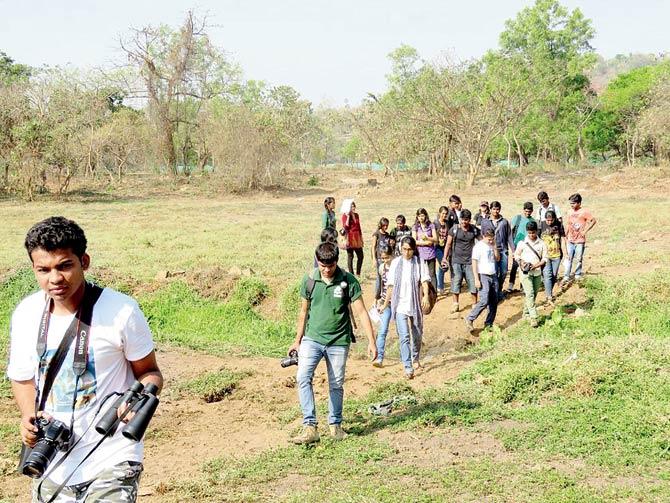I’ve had the good fortune of living in some fantastic locations across the world

 I’ve had the good fortune of living in some fantastic locations across the world. Out of them, the rural, tribal and forest stays were memorable in many ways. But I have experienced some incomparable urban campuses too. The pleasure of living in green campuses is doubled when one has the gift to discern and relish the nuances and occurrences that are missing from concretised and near-dead campuses.
I’ve had the good fortune of living in some fantastic locations across the world. Out of them, the rural, tribal and forest stays were memorable in many ways. But I have experienced some incomparable urban campuses too. The pleasure of living in green campuses is doubled when one has the gift to discern and relish the nuances and occurrences that are missing from concretised and near-dead campuses.
 Birders at Aarey Milk Colony
Birders at Aarey Milk Colony
ADVERTISEMENT
I began my childhood in a seven-building green campus called Viman Darshan in Andheri East. It had a garden, loads of trees, swings, a sand pit, a walking track, badminton courts and space for social events like Navratri. The kids played on the campus, while elders kept a watch on us.
From there, around 1981, we shifted to my current residence in Tarun Bharat Society in Andheri (East), which is a 70-building, mega-campus but was intended to be a bungalow complex. Sadly, it has now only two isolated bungalows to display. But when we moved in, the area was lush green. They harboured mango, jackfruit and sapota (chikoo) orchards, besides plenty of rare trees such as love apples (jaam), cannon ball (kailashpati) and Indian coral trees (pangara). The place was full of birds, bats, monkeys, an occasional mongoose or jackal, but many stray dogs. I remember over 200 rosy starlings roosting in the nearby Bhend tree, during their winter visit here. These sleepy 3-4 storey tree-lined complexes are now giving way to 7-8 storey complexes. Thankfully, due to the proximity to the airport, even after redevelopment the tower heights are regulated. The mega-colony format ensures that even if individual buildings have fewer trees, the roads are lined with a dense avenue of copperpod, peepul, umbar and rain trees.
My school was St Dominic Savio (Mahakali Caves), and till date, it is one of the greenest school campuses of Mumbai. Further, in 1986, I moved into the 68-acre Bhavan’s College Andheri West Campus, which has a lake, a botanical garden, sports fields and two school campuses. Here, I began my foray into nature study. Here on, I moved to Dehradun and spent seven years in three green campuses — the 1,000-acre Forest Research Institute Campus, the 198-acre Chandrabani Campus of Wildlife Institute of India and the 70-acre Chandbagh campus of Doon School.
Mumbai has many such green residential and academic campuses, such as the Aarey Milk Colony, Sundernagar and Bangurnagar — all in Goregaon — BARC Colony (Anushaktinagar), Everard and Chedda Nagar (Chembur), IIT and NITIE (Powai), Ismail Yusuf College (Jogeshwari), Ruparel College (Matunga), St Xavier’s and Sophia College in South Mumbai and Hindu Colony (Dadar).
This year, under the aegis of the Great Backyard Bird Count (Feb 12-15, 2016), world over, amateur and professional birdwatchers will undertake Campus Bird Counts and upload their 15-20minute observations on ebird.org/ india or the App of Bird Count India. This will help put together vital information on bird diversity. It will be great if school and college students, morning walkers and senior citizens or even office-goers, spend 15-20minutes and document birds in their respective campuses and join hands in this international citizen science programme.
Write in to Anand Pendharkar at sproutsenvttrust@gmail.com
 Subscribe today by clicking the link and stay updated with the latest news!" Click here!
Subscribe today by clicking the link and stay updated with the latest news!" Click here!







